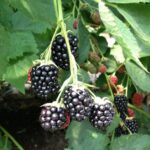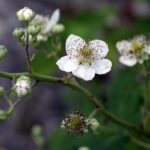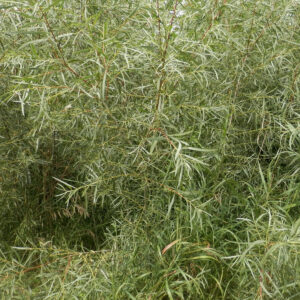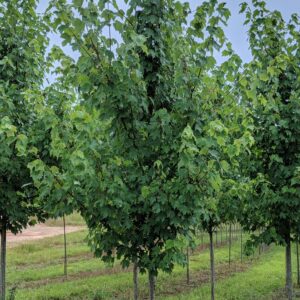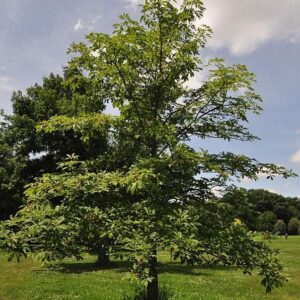WHAT IS BARE ROOT?
- A bare-root seedling is a young plant that is sold and
transported without soil or a container, only during the dormant season. These
seedlings are usually shipped without any soil or potting medium around them.
They are a common way to establish trees and shrubs. Here are some key
characteristics of bare-root seedlings: - No Soil or Container: As the name suggests, bare-root
seedlings are devoid of soil or any form of potting medium. The roots of the
plant are without soil and are typically wrapped in a plastic liner to prevent
them from drying out during transportation. - Dormant Season: Bare-root seedlings are typically available
and shipped during the plant’s dormant season, which is usually in late fall through
winter. This is when the plant is not actively growing, making it easier to
handle and transport. - Easy Handling: Because they lack soil and containers,
bare-root seedlings are lightweight and easy to handle. This also allows them
to be shipped using UPS and FedEx ground services.
HOW TO PLANT A BARE ROOT SEEDLING
Planting a bare-root seedling is a straightforward process if you follow the right steps. Here’s a step-by-step guide on how to plant a bare-root seedling:
Materials Needed:
- Bare-root seedling
- Shovel or spade
- Watering can or hose
- Organic compost (optional)
- Mulch (optional)
Steps:
Prepare the Site: Choose a suitable planting location making sure the area is free from weeds and debris.
Dig a Hole: Use a shovel or spade to dig a hole that is wide enough to accommodate the spread-out roots of the seedling and deep enough to allow the roots to be positioned at their natural depth. The exact dimensions of the hole will depend on the size of the root system, but a typical depth for most bare-root seedlings is about as deep as the roots and wide enough to allow for proper root spreading.
Soak the Roots: Before planting, it’s a good idea to soak the bare-root seedling’s roots in a bucket of water for a few hours. This will help rehydrate the roots and reduce transplant shock.
Position the Seedling: Place the seedling in the center of the hole, ensuring that the roots are spread out and not bent or cramped. The
crown (the point where the stem meets the roots) should be at or slightly above ground level.
Fill the Hole: Backfill the hole with soil, packing it gently as you go to eliminate air pockets. Ensure that the soil is in contact with the
roots. If you have improved your soil with organic compost, you can mix some of it with the backfill soil.
Water Thoroughly: After planting, water the seedling thoroughly to settle the soil and provide moisture to the roots. Keep the soil
consistently moist in the weeks following planting, but avoid overwatering, as this can lead to root rot.
Apply Mulch (Optional): To conserve moisture and control weeds, you can apply a layer of mulch around the base of the seedling. However, be sure to keep the mulch away from the stem to prevent moisture-related issues.
Stake If Necessary: If your seedling is tall and likely to be top-heavy or subjected to strong winds, you can stake it to provide support.
Use soft ties to secure the tree to the stake, allowing some flexibility for natural movement.
Monitor and Care: Regularly monitor the newly planted seedling for signs of stress, such as wilting or yellowing leaves. Keep up with
a consistent watering schedule and consider adding fertilizer or nutrients as needed based on soil tests and plant requirements.
Protection: If planting during the winter, consider protecting the seedling with a winter wrap or tree guard to shield it from harsh weather.
Blackberry are a group of thorny fruiting deciduous shrubs with a biennial growth habit where it forms vegetative first-year stems, which then produce flowering second-year stems that bears the fruits its known for. The compound leaves may turn yellow to red in fall. Its white to pink flowers give way to clusters of fruits in which usually ripen in summer. Fruits best in full sun and rich, moist, slightly acidic well-drained soils.
| Type: |
Shrub
|
| Height: |
3′- 6′
|
| Spread: |
6’ – 8′
|
| Spacing: |
7′
|
| USDA Hardiness Zone: |
4 – 8
|
| Culture: | Full Sun Part Sun |
| Bloom Color: |
White
|
| Season of Interest: | Summer |
MAINTENANCE NEEDS: Medium Maintenance. Water regularly. Remove fruiting canes to the ground immediately after harvest. Generally performs best when staked. Wilt, Anthracnose, and botrytis can be serious disease problems. Cane and crown borers are potential pest issues.
LANDSCAPE USES: Accents or Group Plantings, Borders, Naturalized Areas, Wildlife Garden, Edible Gardens, Hedges, and Containers.
COMPANION PLANTS: White Oak, Chives, Bee Balm
IMAGES: Biberl, Blackberries near Erlangen 1, CC BY-SA 4.0, (2) liz west from Boxborough, MA, USA, Backyard wild blackberries – Flickr – Muffet, CC BY 2.0, (3) Kolforn (Wikimedia), -2020-09-23 Blackberrys, Coast Path, Trimingham, CC BY-SA 4.0, (4) anonymous, Blackberry blossoms, CC BY 2.0
*As plants have ranges in appearance they may not appear as the images shown.

